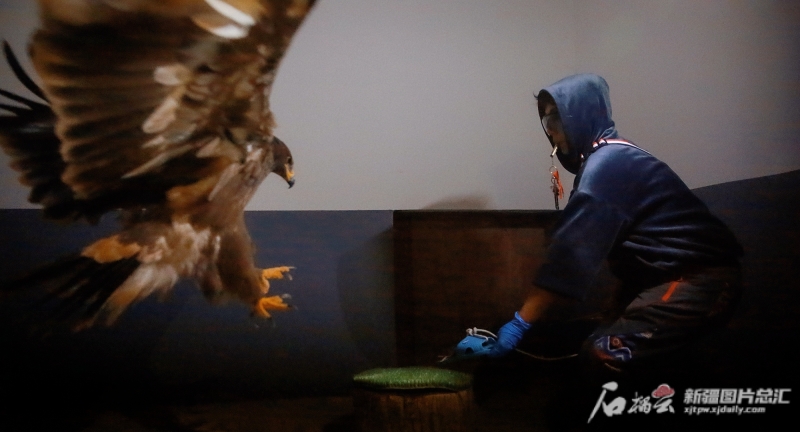Shiliuyun-Xinjiang Daily (Reporter Zhang Ting, Correspondent Dong Shiju) news: “Animal usually has a very sensitive sense of smell. Today is the first day they (referring to beavers) live at their new home, and they need to adapt to the closed room and get familiar with the environment first, then they will play freely tomorrow, not as restrained as today,” said Chu Wenwen, the founder of the Nature Conservancy of Altay Prefecture, while watching these wildlife rescued and resettled at their “new home”, the ‘Ark of Beaver’ wildlife rescue center, for the first time on October 31, 2022.
After the Frost Descent (the 18th Chinese Solar Term), temperature along the Ulungur River drops down gradually. Before the bitter winter, the ‘Ark of Beaver’ wildlife rescue center, a highlight of biodiversity conservation in Altay Prefecture, Xinjiang, starts trial operation in Fuyun County, Altay Prefecture. More than 10 rare wildlife under national protection such as Eurasian eagle-owl, lesser kestrel, scops owl and black kite are the first batch of wildlife rescued by the Nature Conservancy of Altay Prefecture and resettled at the rescue center.

Photo shows a staff feeds a steppe eagle resettled at the ‘Ark of Beaver’ wildlife rescue center for the first time. (Photo by Sun Wusheng)
In order to protect some injured and trapped wildlife, the Nature Conservancy launched the public welfare crowdfunding project "Ark of Beaver" in early 2021, and started to build a professional wildlife rescue center. By October, 2022, with the support of the Forestry and Grassland Administration of Altay Prefecture, the Party committee and government of Fuyun County, more than 1 million netizens of “the Corps of Beaver” from all over the country who participated in the crowdfunding of the public welfare project have taken nearly two years to successively build the wildlife rescue center.
It is learned that the wildlife rescue center, covering a building area of 2,600 square kilometers, has aviary, animal house, beaver house, treatment room, beaver science popularization education hall, and nature science education exhibition hall, etc. It provides help for more than 500 wildlife every year, including treatment, rehabilitation, wild survival training and post-release monitoring, etc. In addition to bringing a new chance of survival to animals, it will also carry out science popularization education on nature conservation by presenting wildlife protection cases on new media and the Internet, so that more people will know about the public welfare work of biodiversity conservation.
According to Li Xiaoyun, who is incharge of the ‘home of volunteers’ of the Nature Conservancy of Altay Prefecture, the launching of the rescue center marks a threshold to the meticulousness and professionalism of the wildlife rescue operation in the Altay Mountains. Meanwhile, the center provides more than 200 volunteers of nature conservation public welfare every year with professional knowledge education and offline practice, which cultivates volunteers with professional skills for 30 to 50 nature conservation institutions across the country.
Altay Prefecture has always attached great importance to the construction of natural ecology and the protection of wild animals and plants, and has done a good job in the protection of biodiversity. In particular, initial achievements have been made in the protection and management of wetlands, protection of endangered wild animals and plants, and the optimization and adjustment of nature reserves. The comprehensive management capacity of various nature reserves has been significantly improved. The management structure of the Burgen Beaver National Nature Reserve in Xinjiang and the Kanas National Nature Reserve in Xinjiang have been strengthened. The Prefecture has embarked on a path of green development featuring biodiversity, coexistence of wild animals and sound ecology.
“Before the establishment of the rescue center, we had rescued 94 rare wildlife under national protection. The Mengxin beaver protection series public welfare project carried out by our team was listed in the ‘100+ Global Biodiversity Positive Practices and Actions’.” Chu Wenwen said that in the future, they will keep making efforts on wildlife habitat research and observation, nature conservation public awareness, wildlife rescue practice and professional volunteer training, and contribute to the ecological civilization and biodiversity protection.
(A written permission shall be obtained for reprinting, excerpting, copying and mirroring of the contents published on this website. Unauthorized aforementioned act shall be deemed an infringement, of which the actor shall be held accountable under the law.)









